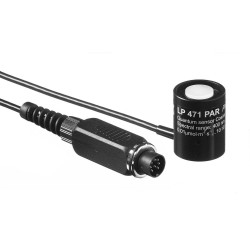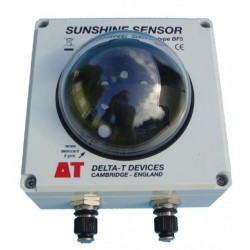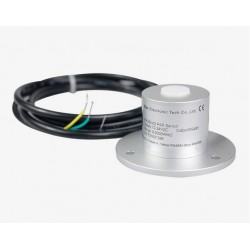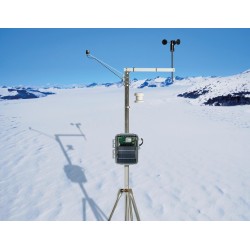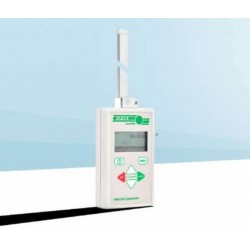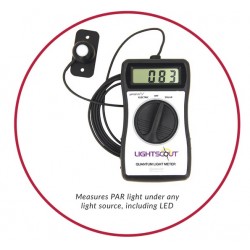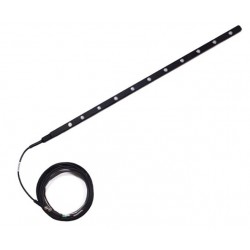No products
Prices are tax excluded
Product successfully added to your shopping cart
There are 0 items in your cart. There is 1 item in your cart.
Catalog
PAR Light
-
PRODUCTS
- WEATHER STATIONS
- WATER QUALITY MONITORING
- TRANSMITTERS AND TRANSDUCERS
- TRAINING & EDUCATION SYSTEMS
- SPECTROMETERS & SPECTRO-RADIOMETERS
- SENSORS & PROBES
- POWER & ENERGY
- MEASUREMENT AND CALIBRATION INSTRUMENTS
- LIGHT & LASER SOURCES
-
LABORATORY, PHARMACY & MEDICINE EQUIPMENT
- Water Quality
- Vet
- VARIOUS
- VACUUM SYSTEMS
- Ultrasonic Baths
- Stirrers
- SPECTRO-PHOTOMETERS
- Showers
- Sensores y Sondas
- Rotary Evaporator
- Refractometers
- Pumps
- PRECISION BALANCES
- Plant Growth Chambers
- PARTICLE ANALYZERS
- OVENS
- ORBITAL SHAKERS
- Mills
- MILK ANALYZERS
- Microtome
- Microscopes
- Microplate Readers
- MEDICAL ANALYZERS
- Laboratory Reactors
- INFLAMMATION ANALYZERS
- INCUBATORS
- HUMAN TEMPERATURE
- Hotplates
- GAS BURNERS
- Gas Analyzers & Detectors
- FAT ANALYZER
- Evaporators
- Distillers
- Dissolved Oxygen
- Density Meters
- Cultivators
- COLORIMETERS/GLOSS METERS
- COLD STORAGE ROOMS
- Chromatograph
- Chillers, Coolers, Refrigerators
- Chemical Analyzers
- CENTRIFUGERS
- CABINETS AND HOODS
- Body Scanners
- BATHS AND CIRCULATORS
- AUTOCLAVES
- ANALYSERS
- Anaerobic Workstations/Chambers
- AIR QUALITY
- Air Purify
- Instruments for Geophysics and Seismology
- INDUSTRY & PROCESS CONTROL
-
HAND/PORTABLE METERS
- WOOD MOISTURE
- Weather Station
- WATER QUALITY
- Water Flow
- VIDEOSCOPE
- VIBRATION ANALYZERS
- Veterinary
- ULTRAVIOLET
- Thickness Measurement
- THERMAL IMAGING
- TEMPERATURE & HUMIDITY
- TEMPERATURE
- TDS
- Spectrum Analyzers
- Spectrocolorimeters
- SPECTRO RADIOMETERS
- SPECTRO PHOTOMETERS
- Sound Meter
- SOUND LEVEL METERS
- SOLAR RADIATION
- Soil Moisture
- SOIL COMPACTATION
- SOIL CALCIMETER
- Salinity
- Relative Humidity
- Refractometers
- RADIATION (Gamma, Beta and X)
- Quantum Light 0-4000 µmol
- PRESSURE & TEMPERATURE
- Pressure
- Power Analyzers
- PHOTOSYNTHETIC LIGHT
- pH
- Particles in Air
- OXIGEN
- ORP
- OIL ANALYZERS
- MULTIFUNCTION
- LUXOMETROS
- Leakage Meters & Detectors
- ION MEASUREMENTS
- INFRARED Temp. RADIOMETER
- Humidity Sawdust/Hay/Pellets
- HUMIDITY OF CONCRETE
- GLOSS
- GAS ANALYZERS
- FORMALDEHYDE
- Food
- Fluorometers
- Distance rangefinder
- DISSOLVED OXYGEN
- Density
- CONDUCTIVITY METERS
- CONDUCTIVITY
- Colorimeters
- CO2 (Carbon Dioxide)
- CO (Monóxido de Carbono)
- CHLOROPHYLL CONCENTRATION
- Cement Moisture
- ANEMOMETER
- AIR QUALITY
- ACCESORIES
- FUEL CELL HARDWARE
- FLOW METERS
- ENVIRONMENTAL PRODUCTS
- Environmental Hygiene
- ELECTROCHEMISTRY, MATERIAL SCIENCE & IMPEDANCE
- ELECTRICITY NETWORK ANALYZERS
- DATA LOGGERS
- CLOROPHYL PHOTOSYNTHESIS
- CATALOGS
-
Browse by Measurement
- Wood Moisture
- Wind Direction
- Water Quality
- Water Level
- WATER FLOW
- VOC
- Viscosity
- Vibration Analyzers
- Vet
- V & mV
- Ultraviolet Light
- Turbidity
- Time
- Thickness
- Temperature
- Telemetry
- TDS
- Strain Gauges
- Stomatal Conduct.
- Sterilization
- States (ON/OFF)
- Spectroradiometry
- Spectrophotometry
- Spectrometry
- Solar Radiation
- Soil Water Potential
- Soil Moisture
- Sodium
- Snow Depth
- Seismology
- Sap/Sap Flow
- Sap Flow
- Salinity/Conductivity
- RELAY OUTPUTS
- Relative Humidity
- Rain Gauge
- Radon
- Radiation
- Quantum Light
- Pulses
- Pressure
- Potassium
- Pipes Inspection
- Photosynthesis
- Pharmacy & Medicine
- pH
- Peristaltic Pumps
- Penetrometers
- Particle Meters
- Particle Counters
- PAR Light
- Ozone (O3)
- Oxígeno Disuelto DO
- ORP - REDOX
- Occupation and Time
- O2 Oxygen
- Noise
- Nitrogen Generators
- Nitrate
- Network Analyzers
- Movement & GPS
- Meteorology
- Load Cells
- Light & Laser Sources
- Level
- Leaf Wetness
- Leaf area index
- LCR
- KW & KW/H
- Ions
- Impedance
- Idc (DC Current)
- Iac (AC Current)
- Haze/Fog
- GEOTECHNICS
- Geiger counters
- GAS (ANALYZERS)
- Fuel Cells
- Fluorescence
- Flavor/Taste/Acidity
- Exterior humidity
- Events
- Evapotranspiration
- Energy and Power
- Electrochemistry
- Distance
- Differential Pressure
- Diesel Level
- Dew Point
- Destiladores
- Density
- Dendrometers
- Cryoscopes
- Cracks in Buildings
- Conductivity in Water
- Conductivity in Soil
- COMPRESSED AIR
- Color / Colorimeter
- CO2 Carbon Dioxide
- CO Carbon Monoxide
- Chlorophyll
- Calibrators
- Calcium
- Autoclaves
- Atmospheric Pressure
- Ammonia
- Airflow
- Air Speed
- Air quality
- 4-20mA
- Highlighted
-
Brands
- WonATech
- Walz
- Veris Industries
- Vegetronix
- UPWARD INNOVATIONS
- Tempmate
- Tanel
- TandD
- StellarNet .Inc
- Spectrum Technologie
- SolGeo
- SCRIBNER ASSOCIATES
- Scientech Tech.
- RST Instruments
- RIKA SENSORS
- RADONOVA
- Quarta-Rad
- PSI (Photon Systems)
- Pronamic
- Particles Plus
- Onset
- Nvis Technologies
- NorECs
- NexCeris - NextCell
- Nesa
- MRC Lab. Equipment
- Meter Environment
- MEATROL
- Magnelab
- MAE srl
- Konted
- KandH
- Judd Communications
- IMKO
- iButton
- Hubei Fangyuan
- HORIBA/Laqua
- HONGYUV
- Grant Instruments
- Gentos
- Fuehler Systeme
- FRIGGA
- EMS Brno
- EME Systems
- ELECTROCHEM INC.
- Eko Instruments
- Ecomatik
- Delta-T
- Delta Ohm (Senseca)
- Decagon
- Davis
- Comet System
- Chao Sensor
- Capetti Elettronica
- Bosean
- Blue Maestro
- Autoedu
- Atago
- Aquas Inc.
- Aquaread
- Apogee Instruments
- AO-Electronics
- Algodue
- AIRY TECHNOLOGY
- Acksen
- 3nh
- Spectral Evolution
-
Applications
- Water
- Veterinary
- TRAINING / EDUCATIONAL
- SPECTROSCOPY & SPECTROPHOTOMETRY
- SCIENCE AND RESEARCH
- MEASUREMENT AND CALIBRATION INSTRUMENTS
- LABORATORY, PHARMACY, MEDICINE AND HEALTH
- INDUSTRY
- Geotechnics /Seismology
- ENVIRONMENTAL SCIENCES
- ENVIRONMENTAL HYGIENE
- Cold Chain - Transport
- Building Monitoring
- AUTOMOTIVE
- AUTOCLAVES
fuentes RSS
No RSS feed added

PAR LIGHT - Photosynthetically Active Radiation (PAR)
-
LP471PAR LP471PAR Quantum-radiometric probe to measure the Flux of Photons in the chlorophyll field PAR (400 nm - 700 nm)
Measuring range:- 0.10 μmol m-²s-¹…10·10³ μmol m-²s-¹.
345,00 € -
BF5 Solar & PAR Light Radiation Sensor
Measures global and diffuse radiation Sunshine duration No moving parts, no shade rings PAR reference sensor for SunScan System Outputs can be PAR (mmol.m-2.s-1), Energy (W.m-2) or Lux See “How Greenwich University Is Rethinking Solar Panels for Greenhouses using the BF5 - Delta-T Case Study”.
2 580,00 € -
AO-200-02 PAR Light Sensor ((2Vdc, 4-20mA or RS485 outputs)
AO-200-02 Quantum PAR Sensor , Photosynthetic Active Radiation SensorCertification: CE-EMC, CE-LVD, RoHS, ISO9001 7 RS485 Units in stock for immediate delivery!
365,00 € -
Data Garrison DG-SWS Satellite Weather Station
Key Advantages ◆ Worldwide Satellite coverage◆ Plug-and-play compatibility with Onset HOBO Smart Sensors◆ Weather alerts are sent via text or email messages◆ Smart-charging solar technology◆ Automatically transmits data to user accounts at DataGarrison.com◆ Operates on Iridium’s truly global satellite network
-
LP-80 ACCUPAR ceptometer to measure PAR radiation and estimate LAI
ACCUPAR LP-80: Canopy Interception and Leaf Area Index Operating principle:◆ There are several methods to measure radiation interception in plant covers and establish a relationship with respect to cover size, LAI and current Evapo-transpiration.◆ The ACCUPAR LP-80 Ceptometer for PAR Radiation measurement and LAI estimation, quickly, simply and easily...
-
Apogee AT-100 microCache Bluetooth Micro Logger
◆ The AT-100 connects directly to several Apogee sensors.◆ It features live meter mode, standalone data logging, and graphing using our free Apogee Connect App for iOS and Android.
495,00 € -
3415SXSE Lightscout Solar/Electric Quantum (Par) Meter - with external Sensor
The 3415SXSE LightScout Solar/Electric Quantum (PAR) Meter includes an external sensor.
495,00 € -
MQ-301X Apogee Line Quantum with 10 Sensors and Handheld Meter
◆ The MQ-301X is composed of a separated sensor bar with 10 sensors connected to a hand-held meter via a 2m cable. ◆ Apogee line quantum sensors measure the spatial average of photosynthetically active radiation (PAR).
965,00 € -
SQ-301X-SS Line Quantum with 10 Sensors
◆ The SQ-301X-SS has a sensor bar with 10 sensors and is self-powered with a 0 to 250 mV output.◆ Apogee line quantum sensors measure a spatial average of photosynthetically active radiation (PAR).
780,00 €


